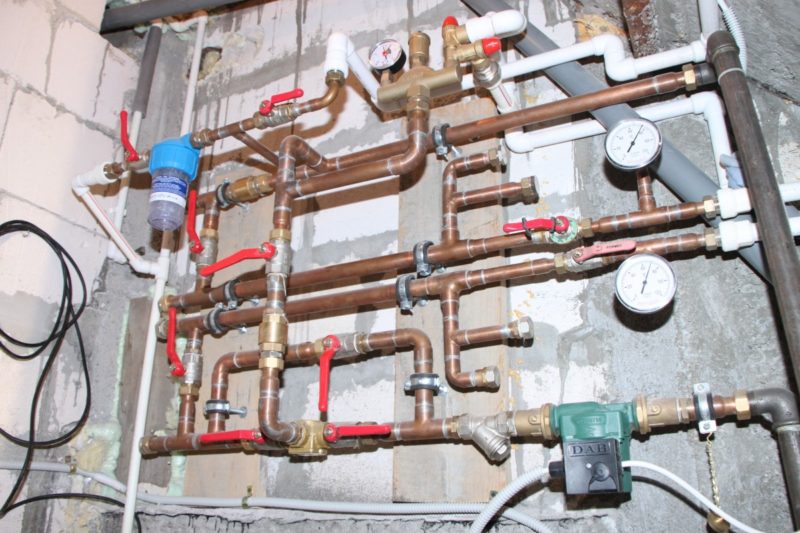Are you wondering about how to fix a tankless water heater? No more worries, you have arrived at the right place. Close the water supply and exit faucets, turn off the power, disconnect the gas connection, or switch the breaker on a gas unit.
Turn off the 240v circuit breaker or the unplug button in the panelboard on an electrical unit. One of the most prevalent issues with water heaters is a lack of heated air. The proper supply of power gas to the water heater must be checked first.
Check to see if the control valve is open. Whenever the device is switched on, examine the gas burner to see if the fire rod produces sparks; if not, this might be a cause of ignition. Sometimes it is a cause of minerals deposits in your tankless water heater, which leads to many issues, so keep your heater clean to avoid this type of problem. Stay tuned to learn more!
Steps To Fix A Tankless Water Heater
The Water heaters without tanks are power-efficient, need little upkeep, and are relatively long-lasting. However, they, like every device, aren’t without flaws. They may experience minor issues periodically, such as a lack of hot water or a failure to fire. Tankless warmers, also called a requirement or instant water heaters, simply heat water as demanded. They don’t have the same continuous power loss as stored water heaters; therefore, you may save cost. Read the below-mentioned steps to learn how to fix a tankless water heater.
Step #1. Remove the calcium buildup
You should stay updated for calcium accumulation within your heater, even if you have a regular or tankless heater. Heavy water (as opposed to plain water) contains a high mineral concentration, and the harsher your water is, the greater the risk of mineral accumulation. The minerals magnesium and calcium are the most likely reasons for crusty development, which can compromise the heater’s performance if not addressed.
It’s also vital to evaluate the filtration system in your heater if you have a water heater without a tank or are upgrading from a typical tank water heater to a tankless water heater, particularly if you have deep water. Tanks heaters don’t need to be serviced as regularly, if at all, as tankless water heaters do, however water heaters without tanks do. Water causes more debris to build up in the water heater, making it hard for water to pass down the lengthy, tiny gap towards the heat transfer.
Know these things too; read how to clean calcium out of water heater and how to get sediment out of water heater.
Step #2. Avoid overloading
Based on its capability, just so much concurrent hot waters will overwhelm a water heater. If a heater gets overloaded, this could fail to provide enough heated air or completely shut down. Whether this occurs, you can minimize concurrent uses to minimize hot water consumption, and you’ll need to try resetting the system. But, if the tankless heater is routinely overworked, you may consider changing to a larger water heater or installing a second unit. However, a backcourt may appear to be an expensive purchase, and this will save you money long term since you will use very little water when awaiting heated water and use less energy to heat water.
Step #3. Clear the blocked exhaust
A screen on many tankless water heaters will show an error message saying if your supply air or vent is obstructed. It indicates a problem with your water heater’s combustion or exhaust. First, double-check that all exhaust pipes are correctly attached and free of punctured flaws. Placing your heater excessively close to certain other items can obstruct the supply air and cause a fire danger, so check your product documentation to ensure the distance criteria are satisfied. Birds’ nests, rats’ nests, and insects’ nests can all obstruct your vents, so check all outlets situated or connect beyond your home ultimately.
Step #4. Solve ignition failure
There seem to be various reasons why your heater might not light. The lack of gas frequently causes this problem, therefore ensure the gas canister is filled before proceeding. Also, the ignition may malfunction if the gas or water faucets aren’t fully opened. Check and ultimately open the gas and water valves. If these measures don’t work, it’s possible that the igniting unit has died or that there’s a more serious issue. You must approach tech assistance for assistance in troubleshooting the problem and, if required, ordering replacements.
Step #5. Solve the flame failure
The gas issue or perhaps an electrical fault is the most common cause of flame failure. Like lighting malfunction, fundamental reasons, including a tank with short gas propane or an overdue gas payment, should be ruled out first. Other reasons for fire loss also provide a clogged gas line, a faulty controller, ignition difficulties, leaking, and much more. Know the downside of a tankless water heater.
It’s A Wrap!
We are delighted to know that you have learned how to fix a tankless water heater. If your tankless heater is not working correctly, you can fix them by reading this article. If you give proper attention to your tankless water heater, you will never face any problems. Thank you, friend, for staying with us!

